Making a Bee Friendly Garden - Tips & Ideas
It is rare you come out of a pub with anything useful, but it was a chance encounter in a local hostelry which led to a complete transformation in my garden. Poorly-producing apple trees suddenly became productive, while raspberry and tayberry plants seemed to double their yield in a single season.
I had got talking to a local beekeeper who - due to a dodgy hip - was having trouble accessing his hives, which were located in a neighbour's field. I have a laneway leading up to my house with a nice open spot, so suggested he move them there to make things easier on himself.
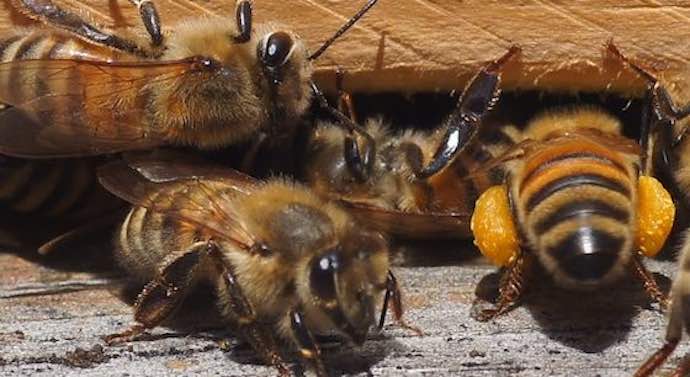
He started three years ago with one hive, and now has four. I have been planting more flowers around the place to keep the bees happy, but this year I have decided to be more selective in my choices.
I have recently learned that hanging, trumpet-shaped flowers are a better source of food in our damp climate, because their shape protects the nectar from the rain. The flowers of fuchsia, escallonia or heather are ideal - which is handy for me, as they will all thrive in my acidic garden soil.
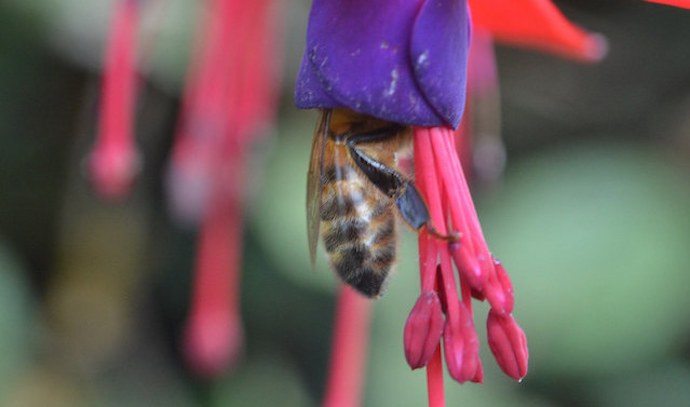
Early and Late Season Food Sources
Another pertinent tip is that if you want to be really helpful you should plant varieties that flower in late autumn, winter or early spring. In midsummer there is nectar and pollen available everywhere, so any of your additions won't make that much difference to the bees.
Where you can become a life saver however is in the leaner months of the year, when there is little else about. Bees use mild periods in winter to forage for whatever is available; it is at these times that fresh supplies make all the difference. Good winter flowering plants include Viburnum tinus and Erica carnea (white heather).
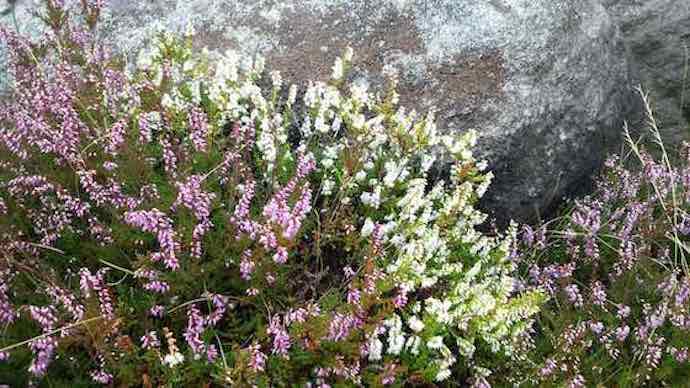
Flowers with a long flowering period are more useful than those with short ones, as if bad weather keeps bees in the hive they might miss a crucial nectar gathering opportunity. Again, fuchsia and Viburnum tinus fit the bill. While heather flowers for a long period, nectar is produced for a relatively short time - but its honey is viewed by many as the best of all.
Of course my increased fruit productivity works both ways: bees obviously benefit from the flowers too. Good fruits to plant include apple, raspberry, blackberry and hybrid berries (such as tayberry, boysenberry and loganberry).
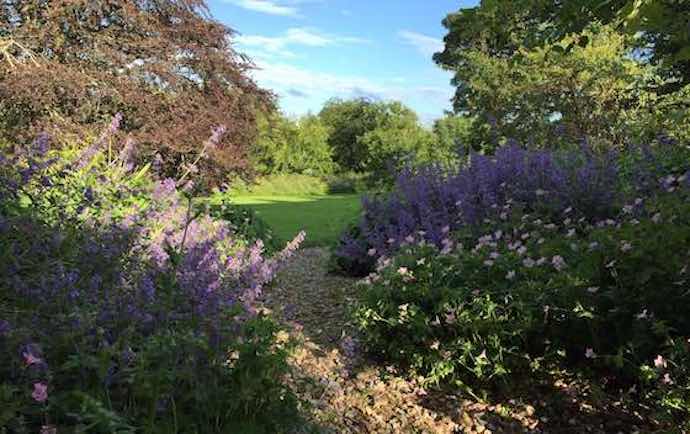
Good bee-friendly trees include willow, holly, lime and sycamore. Beneficial flowers include annuals like alyssum, borage, cosmos and forget-me-not and perennials like hardy geraniums, catmint and aster. It's probably not the best photo in the world as I was just loosing the evening sun but you can see a mat of pink geranium with purple catmint behind in my garden above. The catmint (Nepeta 'Six Hills Giant') is always full of bees and has a very long flowering season.
Herbs are also very valuable including rosemary, thyme, marjoram and chives but nearly all herbs will be useful when allowed to flower.
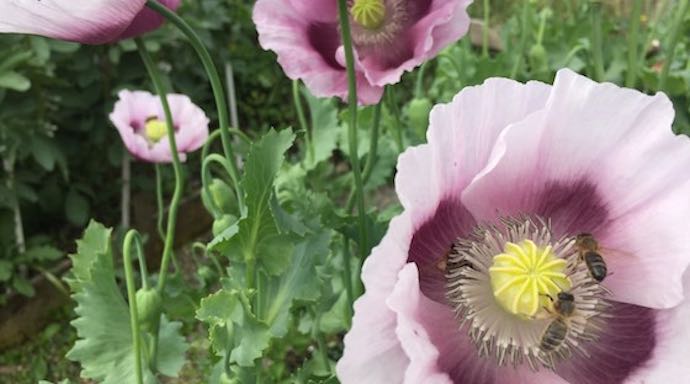
The photo above is of some poppies I planted between my potatoes (stupidy as it turned out, they look amazing, are growing like crazy but the same can't be said for the potatoes), you can see three bees getting stuck into the nearest bloom. By the way, bees very rarely sting when they are collecting pollen and nectar so there is no need to be concerned about attracting more to your garden. When I took the photos I was surrounded by 20 or 30 bumble and honey bees who weren't paying me the slightest bit of attention.
I will be writing more on bees soon when we introduce bee and insect friendly plant packs as we get started with a new conservation range of products. It is a fascinating subject and one I am very excited about, I look forward to passing on more photos and information to you.
